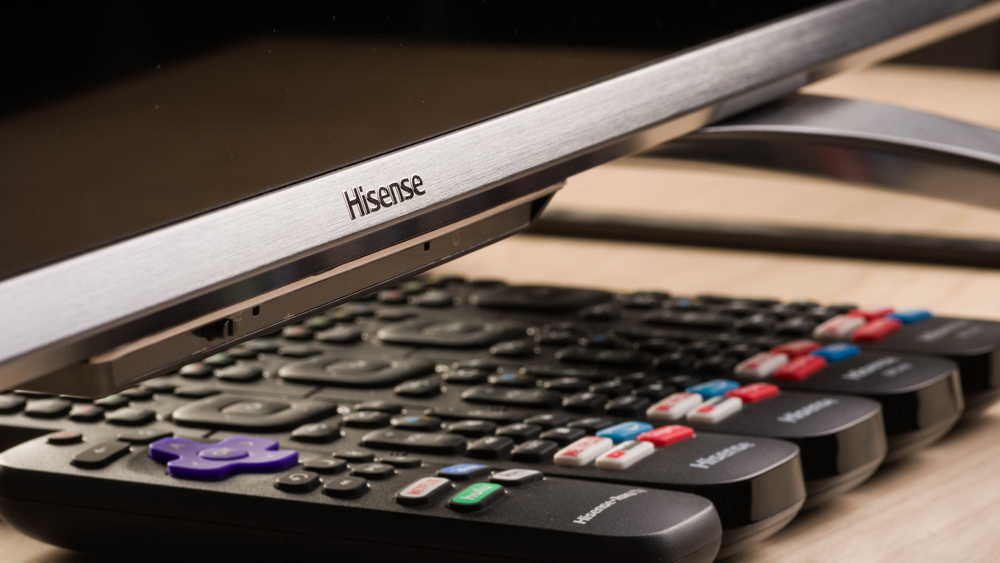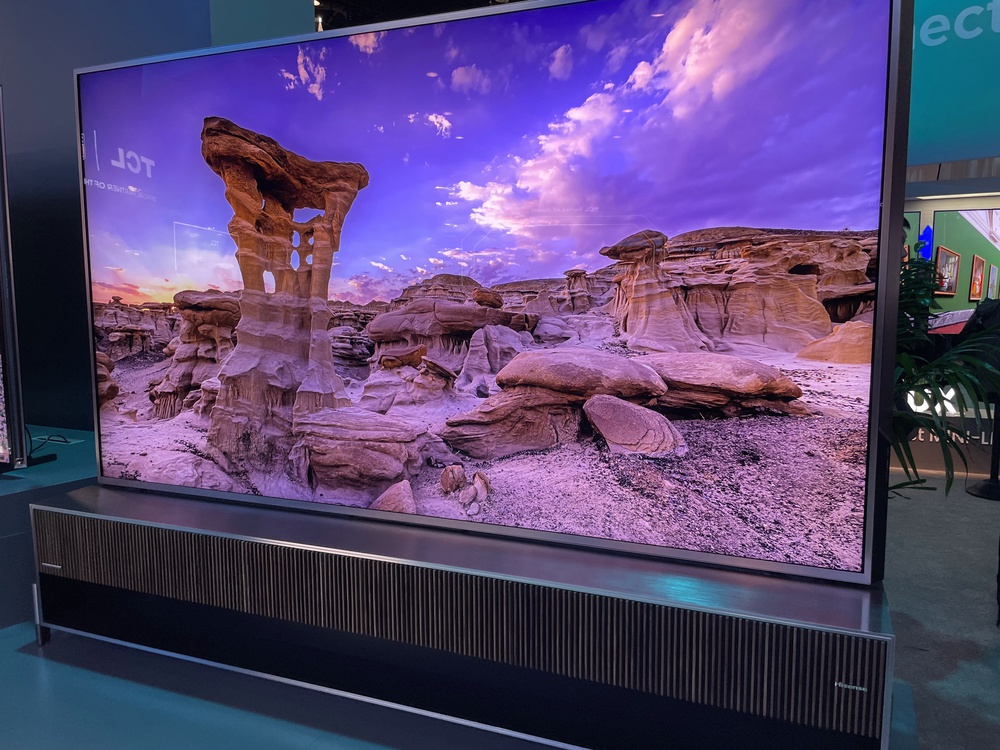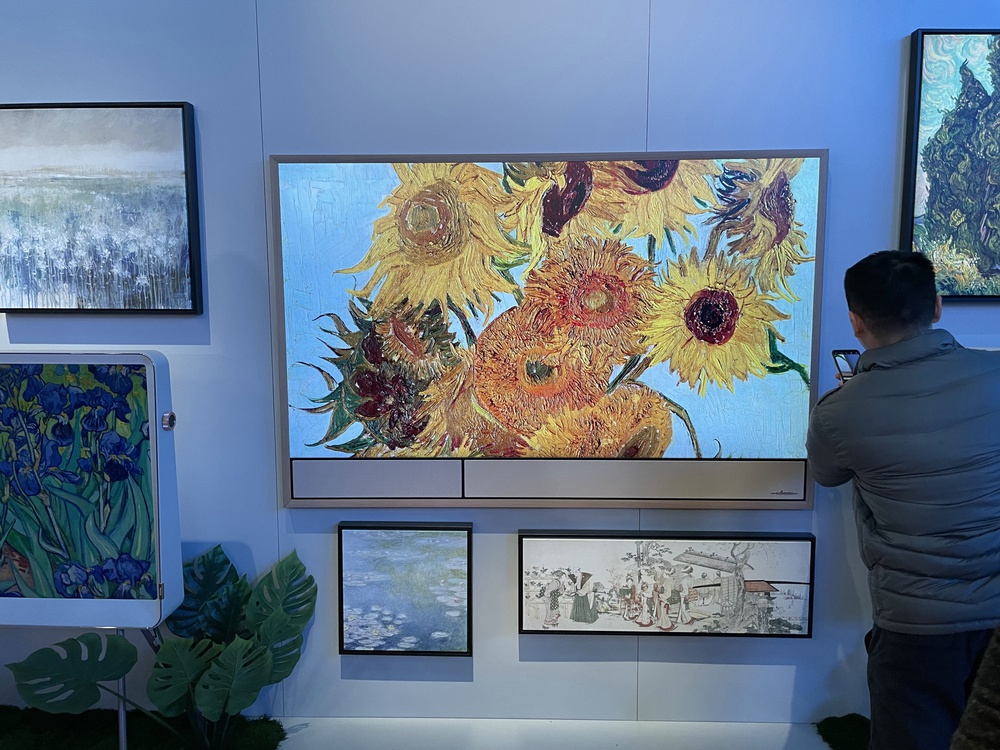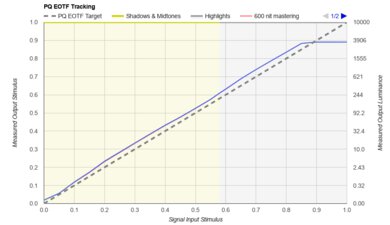
We've bought and tested more than 25 Hisense TVs. Hisense has been growing in popularity over the years, and even though they started as more of a budget company, they're competing with bigger brands now. Hisense TVs offer great value for their price, so you won't break the bank buying one. They've recently started to add gaming features like variable refresh rate (VRR) support, so they compete with some other brands. However, their TVs can also suffer from quality problems like bugs, uniformity, and motion issues. You can find our picks for the best Hisense models below.
You can vote on which Hisense models you want us to buy and test. To learn more about Hisense's 2024 models, check out our 2024 TV lineup page.
Updates
- 07/25/2024 Hisense U6/U6N reviewed
- 06/07/2024 Hisense U7N [U7, U75N] reviewed
- 05/27/2024 Hisense U8/U8N reviewed
- 12/15/2023 Hisense U7H [U7, U75H] updated
- 11/08/2023 Hisense UX reviewed
Best Hisense Smart TVs
-
Best Hisense TV
Mixed Usage8.5TV Shows8.1Sports8.2Video Games9.0HDR Movies8.6HDR Gaming9.0PC Monitor8.7The Hisense U8/U8N is one of the best Hisense TVs we've ever tested. It's also one of the best LED TVs we've ever tested when it comes to contrast, delivering very deep blacks that approach the inky blacks you get from OLED TVs with minimal blooming. This makes it look spectacular in a dark room, but it's also highly suitable for use in a bright room since it's also an incredibly bright TV. Combined with its outstanding reflection handling, the TV gets bright enough in SDR to easily overcome glare in even the most well-lit rooms. It's also remarkably bright in HDR, which makes highlights pop out and delivers an impactful HDR viewing experience. Speaking of HDR, the TV supports Dolby Vision and HDR10+, so you're covered when it comes to advanced HDR formats. The TV also delivers vibrant and lifelike colors in HDR content due to its wide color gamut and outstanding color volume. The TV even has very good image processing, so low-quality and low-resolution content looks good on it. Unfortunately, it has a very narrow viewing angle, so it only looks its best when viewed from the center of the screen.
If you're looking for a TV to play video games on, this TV is packed with modern gaming features. It has HDMI 2.1 bandwidth, up to 4k @ 144Hz, and VRR support, so it can take full advantage of modern gaming consoles and can be paired with PCs that have high-end graphics cards. Additionally, it has an excellent response time for minimal blur behind fast motion, and its incredibly low input lag delivers a responsive gaming experience.
It's available in a range of sizes from 55 inches up to a gigantic 100 inches, and most sizes deliver a very similar experience, with one exception: The 75-inch model uses an ADS Pro panel instead of the VA panel found on the other sizes, giving it worse contrast and black uniformity than the other sizes, but with a wider viewing angle. You could also opt for last year's Hisense U8/U8K if you're looking to save some money and can find it on sale. It's not as bright, its contrast isn't quite as good, and it has a slower response time than the U8N, but it's still an impressive TV that looks great in any setting.
-
Best Mid-Range Hisense TV
Mixed Usage8.1TV Shows7.8Sports8.0Video Games8.7HDR Movies8.0HDR Gaming8.7PC Monitor8.6The best mid-range Hisense TV we've tested is the Hisense U7N. Its contrast isn't as good as the Hisense U8/U8N, but it still delivers deep blacks in a dark room due to its effective local dimming feature, although you do notice more blooming than you do on the U8N. It's not quite as bright overall as the U8N, but it's still a very bright TV that overcomes glare in a well-lit room while watching SDR content, and its HDR peak brightness is still good enough to display bright highlights that stand out. Its color gamut isn't as wide as it is on the U8N, and its color volume isn't as good, but the TV still displays vibrant colors in HDR content that are sure to impress. You also get support for both Dolby Vision and HDR10+. Its image processing is on par with the U8N, so low-quality and low-resolution content looks just as good on it. Unfortunately, its viewing angle is narrow, so it's not a great option if you regularly watch TV with a group of friends.
Despite being cheaper than the U8N, the U7N has the same modern gaming features like HDMI 2.1 bandwidth, 4k @ 144Hz, and VRR support, so it's a good option to pair with gaming PCs, and it's fully compatible with both the PS5 and the Xbox Series X|S. You also get the same low input lag and fast response time, so it provides a responsive gaming experience with minimal blur.
It's only available in three sizes: 55-inch, 65-inch, and 75-inch. Like the U8N, the 75-inch model uses an ADS Pro panel, with worse contrast but a wider viewing angle. If you want to save some money and you're willing to sacrifice some contrast and brightness, you can still find last year's Hisense U7K on clearance at some retailers. Although it's not as good as the U7N, it still delivers great overall picture quality.
-
Best Budget Hisense TV
Mixed Usage7.4TV Shows6.9Sports7.0Video Games7.8HDR Movies7.5HDR Gaming8.0PC Monitor7.7If you're on a tighter budget, the Hisense U6/U6K offers great value compared to similarly priced models from other brands. Unlike the Hisense U7N and Hisense U8/U8N, you aren't getting the same high-end features and performance, but it's still quite decent. It uses the same quantum dot technology, which means it displays a wide range of colors and has remarkable pre-calibration accuracy, so you won't have to get it calibrated to get accurate colors.
You lose quite a few features by stepping down to the budget range. Like other Hisense TVs, it comes with a VA panel with deep blacks, but its local dimming feature is sub-par, struggling to keep up with fast-moving objects. This TV has four HDMI 2.0 bandwidth ports with a 60Hz panel, so you lose out on the 144Hz refresh rate of the more expensive models. It does have VRR but over a rather narrow 48–60Hz range. It's also quite a bit dimmer, with worse contrast, than the other models, so HDR content doesn't look as vibrant overall.
It supports Dolby Vision and HDR10+ as well as advanced DTS audio format support, but its low-quality content smoothing is poor, so it isn't as good for a home entertainment center as the higher-end models. Still, it's cheaper than the other TVs, and for the price, it's one of the best budget models currently on the market. If you're not looking for high-end performance or features, you'll be very satisfied with the U6.
The 2024 Hisense U6N is now available. It's supposed to have an improved local dimming feature for better contrast and an increase in brightness, but it's also a lot more expensive at first. Unless you need those incremental upgrades, you're better off getting the cheaper U6K while it's still available.
-
Best Cheap Hisense TV
Mixed Usage7.2TV Shows6.8Sports6.9Video Games7.6HDR Movies7.3HDR Gaming7.8PC Monitor7.5If you're looking for the cheapest Hisense TV on the market, you're in luck as they have a fantastic cheap model, the Hisense A6/A65K. It's a Costco exclusive, so it's not as widely available as the other models, but it's so good for the price that it's almost worth getting a Costco membership just for this TV. However, you lose out on a few features compared to the Hisense U6/U6K. Most notably, this model doesn't have local dimming to enhance its contrast and is dimmer than the more expensive alternative. However, it uses a PFS Phosphor panel to give it a wide color gamut, making it almost as colorful as the higher-end model.
Otherwise, it has features you don't normally find on TVs at this price range. It has VRR support, although over the narrow 48–60Hz range. It doesn't support HDR10+ like the more expensive models, but it does have Dolby Vision, which is more widespread. It doesn't support advanced DTS audio formats, but it does support DTS 5.1 over ARC. It has good response time and superbly low input lag, so it's a decent gaming TV overall. Ultimately, this is the best cheap TV on the market, and it's almost as good as the more expensive U6K.
Compared To Other Brands
-
Great value for their price.
Whether you're looking at Hisense's flagship or budget-friendly models, they offer better value than similarly priced options from competitors. Hisense TVs are often among our mid-range and budget-friendly recommended TVs. -
Good for bright and dark rooms.
Hisense's options tend to perform well in both bright and dark environments. They usually have VA panels that display deep blacks, which are bright enough to fight glare in well-lit rooms. -
Great gaming features.
As of 2021, Hisense introduced gaming features like HDMI 2.1 bandwidth and VRR support to some higher-end TVs. Now, their higher-end TVs support up to 4k @ 144Hz, and even their cheaper models have advanced gaming features, like VRR.
-
Narrow viewing angle.
Their ULED TVs mostly use VA panels with a narrow viewing angle, so they aren't good choices for wide seating arrangements. They don't use viewing angle technology like Samsung, so the image looks inconsistent from the side. -
Quality control issues.
The biggest downside to Hisense TVs compared to more expensive competitors is the quality control issues. There are often problems with uniformity and color accuracy, and their TVs have more bugs and quirks than models from name brands.
Hisense vs TCL
TCL is Hisense's main competitor. Both brands offer good value in their TVs, so you can't go wrong with either. Hisense TVs tend to be a bit more well-rounded than TCLs, although TCL is a better company if you need smaller TVs with a low resolution.
Hisense vs Vizio
Like Hisense, Vizio TVs are inexpensive. However, they still tend to cost a bit more than Hisense. Each company offers gaming features with its models, delivering deep blacks. Vizios usually have better black uniformity, but Hisense TVs have better smart features. Vizio is now mostly inactive in the TV market.
Hisense vs LG
Right now, LG and Hisense are offering different values. Hisense's LCD TVs are not only cheaper than LG's, but they're also much better. However, LG has the most varied offering of OLEDs of any manufacturer. Still, even the cheapest of their OLEDs is a bit more expensive than the best Hisense TV, so they're not competing on value.
Hisense vs Samsung
Samsung TVs are typically more expensive than Hisense TVs. That said, Hisense's LCDs are better than Samsung's offerings until you get to Samsung's high-end Neo QLED, but these are much more expensive than anything Hisense offers, and even then, Hisense has caught up in terms of performance. Samsung also has excellent OLEDs for sale, but they're also in a different price bracket than what Hisense offers.
Hisense vs Sony
Sony has an excellent variety of TVs, including LCDs and OLEDs. Sony TVs tend to have amazing image processing features, which used to be a weakness of Hisense TVs. However, Sony tends to be more expensive than LG and Samsung, so they're significantly more expensive than a 'budget' brand like Hisense. Like the other brands, Hisense has the edge in value and quality until you get to Sony's expensive high-end offerings.
Generally speaking, you can't go wrong with a Hisense TV. They offer the best value of any TV brand and perform well in dark and bright environments. There are extra features for gamers, and their smart platform is great. However, they aren't a good choice for wide seating areas, and you might run into some quality control issues or bugs after buying your Hisense TV.
2024 Hisense Lineup
Hisense announced an impressive lineup for 2024, with noticeable improvements to the entire ULED lineup and a few new surprises. They finally showed off the long-rumored 110-inch Hisense UX. Hisense claims that this TV can reach an incredible 10,000 cd/m² and has 40,000 local dimming zones, which should help it deliver one of the most visually impressive HDR experiences available on the market today.
110UX

Hisense's impressive flagship for 2024, the Hisense 110UX, boasts over 40,000 local dimming zones and an advertised peak brightness of 10,000 nits. We asked Hisense about these claims, and their engineers told us that the peak brightness is only for about 1s on a 10% slide, so it's mainly about sudden bright flashes of light in some movies. Put the sunglasses away; you won't be watching hockey at 10,000 nits anytime soon. Hisense also claims that the new UX can display about 95% of the BT.2020 color space, which would make it one of the most vibrant displays available.
We got to check out the 110UX at CES 2024, and it's an impressive TV! Hisense has worked some magic with the viewing angle, as there's barely any noticeable color shift, even at an extremely wide angle. On the other hand, it has one of the glossiest coatings we've ever seen on a TV, so reflections are a bit distracting, as you can clearly see the TCL logo from a display opposite this TV. We're not convinced of the 10,000 nit claim, and with the demo content shown at CES, it was nowhere near that level, but it still looks impressive, especially considering the size.
The UX will also be available in smaller 98" and 75" sizes if you want something more manageable. These smaller models have fewer dimming zones and lower peak brightness than the 110" but are still advertised to be brighter and have more dimming zones than any other TV on the market. It's worth mentioning that more dimming zones don't automatically mean it'll have better local dimming than anything else, as the algorithms controlling those dimming zones significantly impact the final user experience. The demo reels shown at CES had very few dark areas, so it was difficult to get a sense of how well they actually performed. The stand design, MSRP, and release date are still being finalized, but we'll update this when we know more.
ULED
The UX isn't the only TV that got some love this year, as Hisense has also made considerable improvements to the rest of their ULED lineup. The U6N, U7N, and U8N all feature Mini LED backlights, and they advertise their flagship U8N to reach over 3,000 cd/m² with double the dimming zones compared to last year's Hisense U8K. The U7N and U8N both support 144Hz gaming for the latest PC graphics cards. Hisense has also added Wi-Fi 6e and ATSC 3.0 support. Finally, Hisense has also announced the Hisense U76N, which is a new model in the ULED lineup that's only available in a 100" size. It offers the same great features as the Hisense U7N, including 144Hz gaming support and Wi-Fi 6e, and sits between the U7N and the U8N.
CanvasTV


Taking a page from Samsung's playbook, Hisense announced a new lifestyle TV called the CanvasTV. Similar to Samsung's The Frame, its matte coating is designed to blend into your surroundings, and you can use it to display artwork when you're not watching TV. It also has customizable wood-finish bezels to match your living room, and the zero-gap wall mount allows it to sit flush against your wall.
Like the UX above, Hisense is still working out the exact details, so some design elements shown here might not be available in all regions. It's expected to be available in the U.S. in some form later this year, though, and we'll update this section as we learn more.
Product Naming
Hisense uses a simple naming scheme. Starting with the 2021 Hisense TVs, the flagship ULED lineup has a U in front of the model names, while the entry-level models have an A. The first letter is followed by a number to indicate where it stands in the lineup; the last letter represents the year; Hisense uses H for 2022, K for 2023, and N for 2024. For example, the Hisense U8H is a high-end 2022 model, while the Hisense A6H is an entry-level 2022 model. If there's an R in the model code, it means it uses Roku TV instead of Android TV.
Hisense has completely different lineups outside of North America. Some of their naming conventions stay the same; the Hisense U8G is also available in the UK but uses a different smart system. Our results for Hisense TVs are only valid for the American models.
Recent Updates
-
Jun 27, 2024: Replaced the Hisense U7K and Hisense U8/U8K with the Hisense U7N and Hisense U8/U8N in the 'Best Mid-Range Hisense TV' and the 'Best Hisense TV' categories, respectively.
-
May 28, 2024: Refreshed the text in the 'Best Hisense TV' category for clarity.
-
May 01, 2024: Added mentions of the 2024 Hisense U6N, Hisense U7N, and Hisense U8N in the 'Best Budget Hisense TV,' the 'Best Mid-Range Hisense TV,' and the 'Best Hisense TV' categories, respectively.
-
Mar 18, 2024: Confirmed the availability and accuracy of our current picks and condensed the article for clarity.
Conclusion
Overall, Hisense offers something for everybody and generally at a low cost. Their ULED TVs are versatile for any use and have features like HDMI 2.1 bandwidth and variable refresh rate support. Thanks to their VA panels, they generally perform well in dark rooms, and they get bright enough to fight glare in well-lit rooms. However, no company is perfect, and Hisense's TVs can suffer from quality control problems like uniformity issues and motion artifacts. You can't go wrong with a Hisense if you don't think that'll bother you.




![Hisense U7N [U7, U75N] Design Picture](https://i.rtings.com/assets/products/VNHIW7eU/hisense-u7n-u7-u75n/design-small.jpg?format=auto)
![Hisense U7N [U7, U75N] In-Test Picture](https://i.rtings.com/assets/products/pdg00oXz/hisense-u7n-u7-u75n/in-test-small.jpg?format=auto)
![Hisense U7N [U7, U75N] PQ EOTF Graph](https://i.rtings.com/assets/products/76HdaUQX/hisense-u7n-u7-u75n/pqeotf-graph-small.jpg?format=auto)
![Hisense U7N [U7, U75N] Pre Color Picture](https://i.rtings.com/assets/products/JZcTrv01/hisense-u7n-u7-u75n/pre-colorspace-small.jpg?format=auto)







